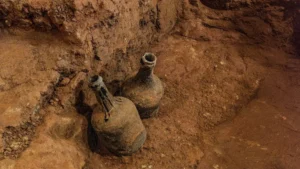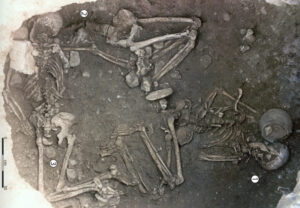Archaeologists have discovered an ancient Mayan city in the jungles of Mexico’s Yucatan Peninsula. No one knew of the city’s existence, and there had been no previous records of it. Hidden in dense foliage, it had never appeared on a map or in any satellite imagery.
They first detected it using LiDAR scans, an effective new tool for modern archaeologists. Lasers fire hundreds of thousands of bursts per second toward the ground. These reflect off surfaces, giving detailed maps of the topography and any ancient structures hidden within the forest.
Amazed researchers said that it was highly unusual to find a site of this size that no one had heard about before.
The team trekked 60km into the jungle to reach the Mayan city. Among the remains, the city featured a clear center on a section of high ground, surrounded by wetlands.
“Its monumental nucleus covers more than 50 hectares and has various large buildings, including several pyramidal structures over 15m high,” said archaeologist Ivan Sprajc.

Ruins of an Ocomtún building with a staircase. Photo: Ivan Sprajc/National Institute of Anthropology and History
1,000 to 1,800 years old
The site consists of three stone plazas, pyramids, and a number of stone columns. The large city may have been an important hub for the Mayan civilization. Dating between 250 and 1000 AD, many of the buildings are arranged in concentric circles. The abundant columns at the site prompted researchers to call the city Ocomtún, which means “stone column” in the Mayan language.
By examining materials from the buildings and other artifacts, researchers hope to narrow the era in which people lived in Ocomtún.
The community includes the remains of a ball court. Ball games were popular in Mayan culture. Players would strike a rubber ball, which represented the sun, across the court without using their hands. The aim was to get it through a stone hoop. Historians think that the game had a religious purpose.
The team found numerous altars near a river that may have served in religious ceremonies.

Part of a stone column. Photo: Ivan Šprajc/National Institute of Anthropology and History
Not an easy place to get to
Ocomtún sits in the Balamku ecological reserve, which is relatively unexplored since it is not an area one can simply walk through. This discovery forms part of a much larger project aiming to expand knowledge of the area’s history. Political anthropologist Simon Martin told The New York Times, “These stories about ‘lost cities in the jungle’ — very often these things are quite minor or being spun by journalists. But this is much closer to the real deal.”
The Mayan civilization was prominent across Mesoamerica. There are multiple well-known sites across Mexico and Central America, including Chichén Itzá. The Mayans are most often remembered for creating the only writing system in pre-Columbian America. They also made advances in architecture and mathematics and had an elaborate calendar system.






